
When you peek in on your chameleon
If your chameleon is lethargic or sleeping during the day, this may be a sign of a parasite infection, malnourishment, metabolic bone disease, or brumation. Lethargy can also be caused by dehydration or an incorrect
Here are a few of the in-depth reasons why your chameleon may be lethargic and what you should do to make your chameleon active and happy again.
Table of Contents
Reasons For Lethargy In Chameleons
Let’s have a look at all the reasons in detail and what you can do about it.
1. Incorrect Temperatures
One of the easiest fixes for a lethargic chameleon is to adjust the temperatures in the enclosure.
If you haven’t been monitoring the temperatures since bringing your reptile home, now is a great time to measure the basking spot, warm side, and cool side of the enclosure.
Low temperatures on the cool side (below 80°F or 26°C) influence sleeping patterns. They might not only start to sleep more, but they might also begin to refuse their
At night, the temperature can dip by about 10°F, but it should never go lower than 70°F (21°C).
Keep in mind that there are different species of chameleons, and some may do well with lower temperatures. Always check the husbandry requirements for your specific species.
Have a look at our chameleon care sheets here:
2. Dehydration
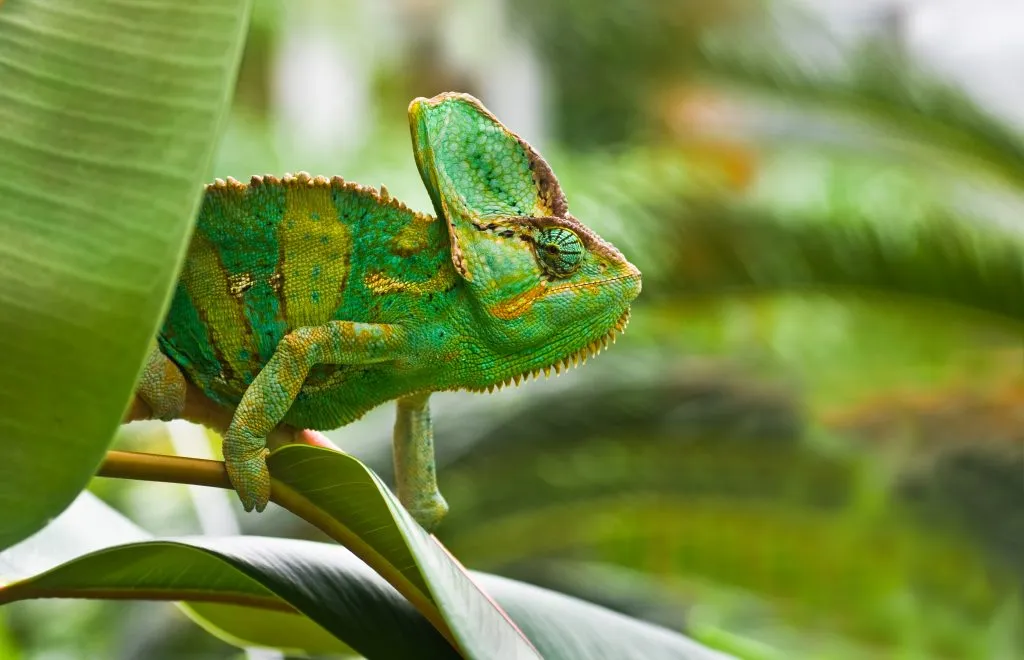
When a chameleon isn’t moving around as much as it used to, you should consider whether it is getting everything it needs. Namely, it might actually be dehydrated. This could be caused by a number of different things, including:
- Not enough water droplets to drink
- Low humidity in the enclosure
- High temperatures that evaporate moisture
- Diarrhea or watery stools
If you notice that your chameleon is displaying other symptoms of illness, you should monitor it to ensure that it doesn’t become dehydrated with diarrhea.
You can view our full guide on what to do if your chameleon has diarrhea here.
Dehydration is easier to spot because it comes with some other symptoms: sagging skin, sunken eyes, and yellow to orange urates.
Unfortunately, dehydration tends to be a double-edged sword. Your lethargic chameleon needs to drink more water, but they feel too tired to do so.
Instead, you can try to bring the water to them by misting their enclosure or putting in a drip system.
Tip: If you fear your chameleon might be dehydrated, read our article here. It will help you to find out if your chameleon is dehydrated and show you how to rehydrate it quickly!
3. Incorrect Diet
Think of how you might feel if you went for an extended period without nourishing
If they don’t get the energy from their
Be sure to give them some variety in their diet and see if they start to perk up.
You can feed them a combination of flies, worms, crickets, snails, and other small gut-loaded insects regularly. This should make up the bulk of their diet.
However, you can also give some fruits and vegetables for treats from time to time, including squash, snap peas, carrots, cucumbers, and berries.
Not all chameleons will eat these treats, so be sure to do some research on what your particular species will eat.
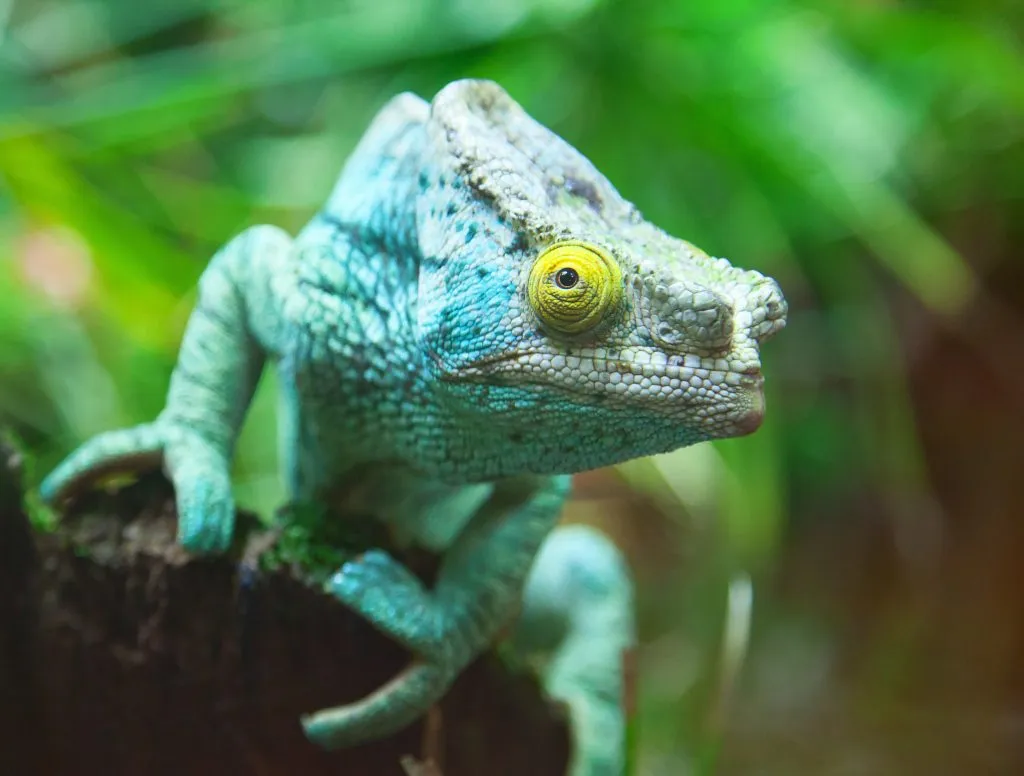
Imagine how you feel if you miss a few meals in a row. You might find that you just want to lay around and do nothing.
The same is true of your chameleon. Closely related to feeding them an incorrect diet, they could be dealing with starvation from infrequent feedings.
Tip: Here are a few reasons why your chameleon isn’t eating and what you can do about it.
4. Metabolic Bone Disease
Perhaps the most pervasive cause of lethargy and the most dangerous is metabolic bone disease. This occurs when your chameleon doesn’t get the calcium or the UVB they need to metabolize the calcium you’ve given them.
The symptoms of MBD are pervasive and can include:
- Lethargy
- Loss of appetite
- Broken bones
- Inability to close its mouth
- Bent joints
If you can catch it early, you may be able to make enough changes in their environment to help them recover.
They should be able to bask in a UVB bulb for at least half the day (12 hours) and you should incorporate more calcium into their diet.
Keep in mind that metabolic bone disease can strike at any age. When the spine is warped or the reptile has trouble bearing weight on its legs, it has progressed very far.
The best thing you can do if you suspect that your chameleon has metabolic bone disease is to consult a veterinarian as soon as possible.
Lethargy in your chameleon as a result of MBD could be a sign that your reptile is actually dying.
5. Stress
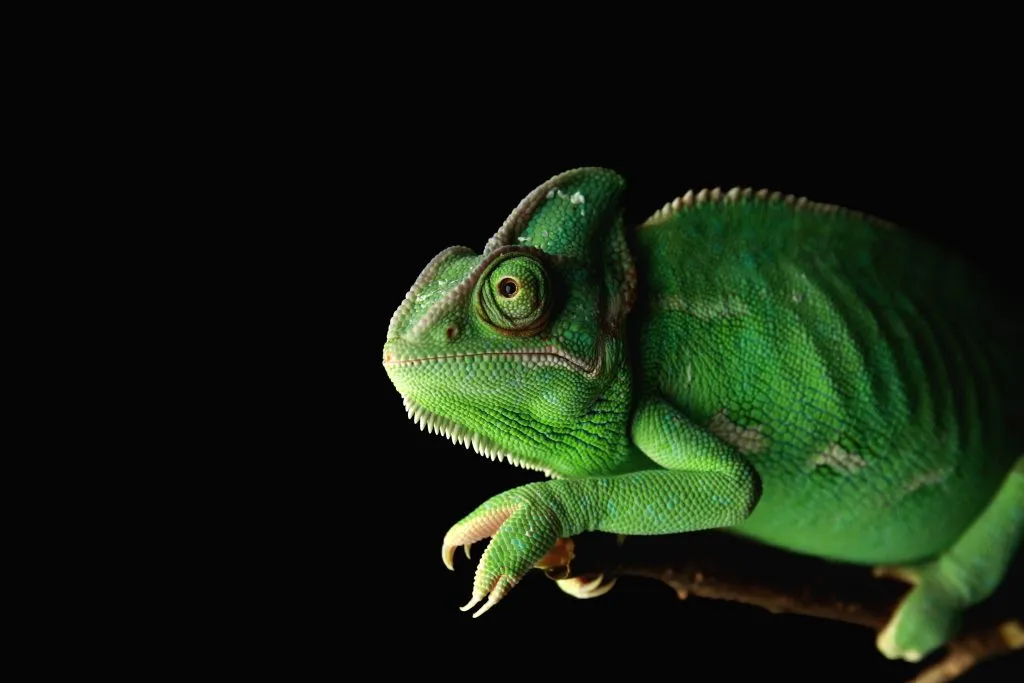
One of the most important things you can do if none of these other reasons resonate with you is to evaluate your chameleon’s living conditions.
Stress can take multiple forms ranging from an improper habitat to the surroundings of their enclosure.
The first thing you might want to do is survey the surroundings. Keep your chameleon up off the floor and away from other pets that may bother it. Try to move slowly around the cage to keep the chameleon from being startled too frequently.
You should also survey their cage to make sure that it suits their needs. Give them plenty of items to climb on and make sure that the enclosure is big enough.
Another sign of stress might surface if you are attempting to handle them.
If they wake up when you reach your hand in and start to run, hide, hiss, or attempt to bite, it is a good sign that they may be under tremendous stress in this situation.
While this is relatively normal for a chameleon, you should monitor for signs of constant stress:
- Frequent color changes with bright or dark colors
- Puffing up
- Puffing their chin out
You should also keep your chameleon in an enclosure on its own. Other chameleons or other types of reptiles can lead to greater degrees of stress.
6. Brumation
Pay careful attention to the season if your chameleon is moving less than usual. Brumation typically takes place in the winter months, and they will sleep or move around less frequently.
Of course, the conditions inside your enclosure can also spur brumation to begin.
Cutting back their
If this describes your chameleon, you can assist them by providing plenty of water to drink and keeping the enclosure warm for them. Always offer them a small meal, even if they don’t often consume it in its entirety.
7. Incorrect Day and Night Cycle
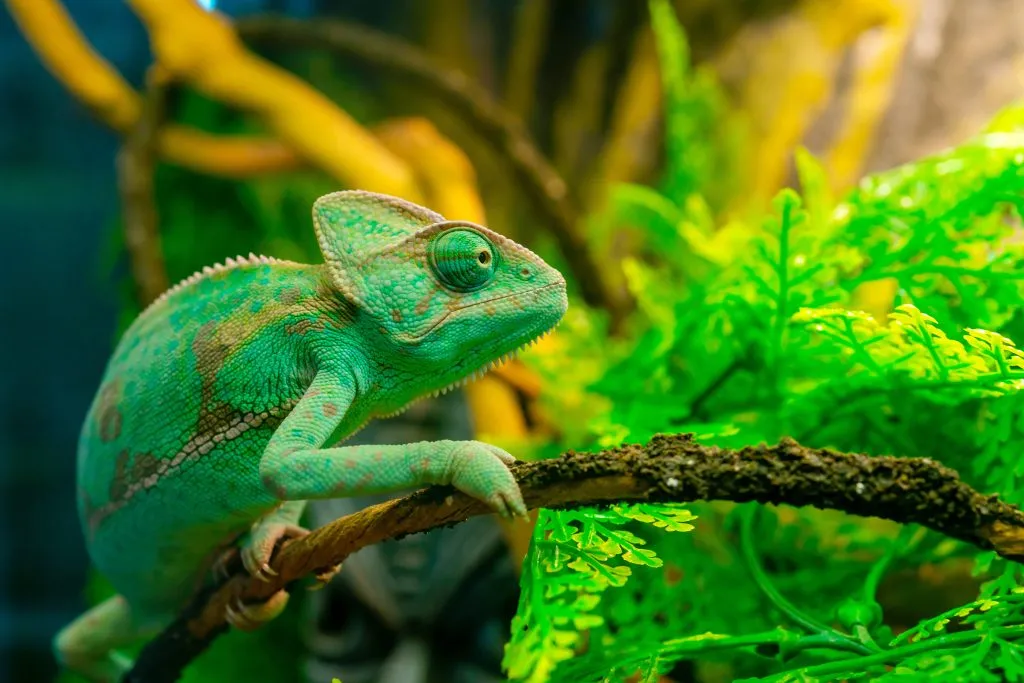
Your chameleon may exhibit more sluggish behavior if the lights in their enclosure aren’t properly attuned to their day and night cycle. The proper day/night cycle should change approximately every 12 hours.
By not switching the lighting off at night in your enclosure, you prevent your chameleon from getting the rest that he needs.
As a result, he or she may resort to sleeping during the day because your chameleon is confused about when the right time to sleep may be. Getting this right is a simple way to reduce lethargy in your chameleon.
Tip: If you would like to know about the best time to turn the lights off in a chameleon
tank , read our article here!
8. Parasites
If your chameleon is sleeping more during the day, it may be caused by internal parasites. Parasites can take up residence in your chameleon’s digestive tract through excrement in the enclosure.
They transfer from the excrement to the
These can be particularly harmful because they eat up all of the nutritional value of the
A veterinarian can take a fecal sample from your chameleon to determine if it has parasites and what the appropriate treatment should be (varies depending on type of parasites).
A Final Word on Lethargy in Your Chameleon
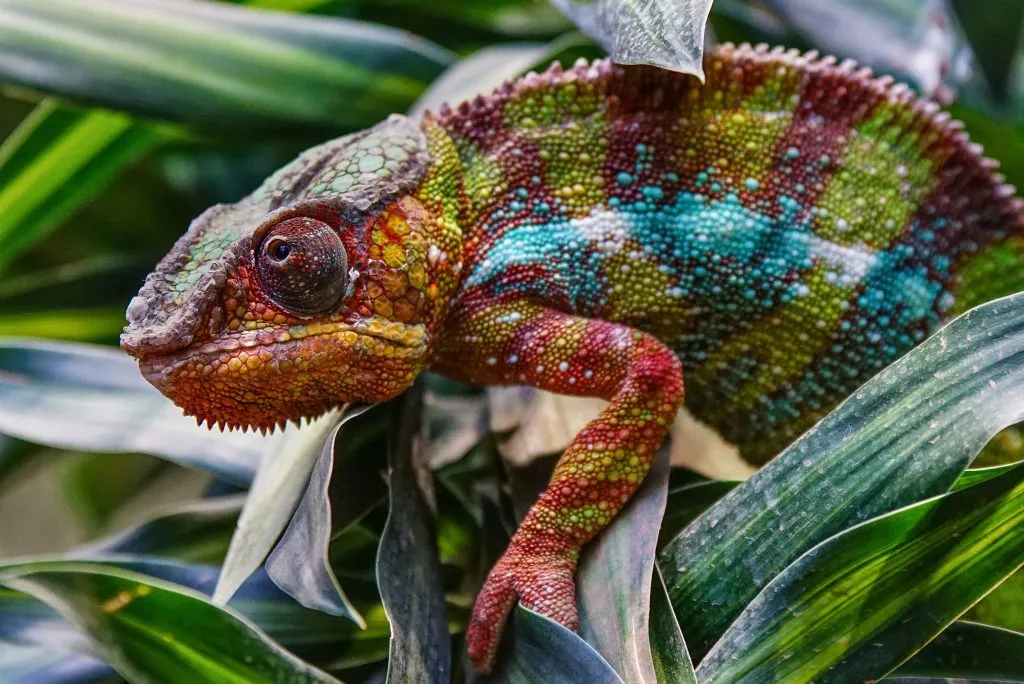
While many of the causes of lethargy in your chameleon can be corrected, it requires thoughtful action to uncover the cause.
You may try a multi-pronged approach, such as increased humidity and water while altering the temperatures in the enclosure for example.
To be sure that your chameleon is as healthy as possible, take them to the veterinarian.
This gives you a chance to ask questions about their care and get to the bottom of why they happen to be sleeping a lot more than usual. It’s always better to be on the safe side!
- Enchi Ball Python: A Unique and Stunning Morph of Python regius - March 27, 2025
- Emerald Tree Monitor: The Enigmatic Green Guardian of the Rainforest - March 26, 2025
- The Egyptian Cobra (Naja haje): A Fascinating Serpent - March 25, 2025
